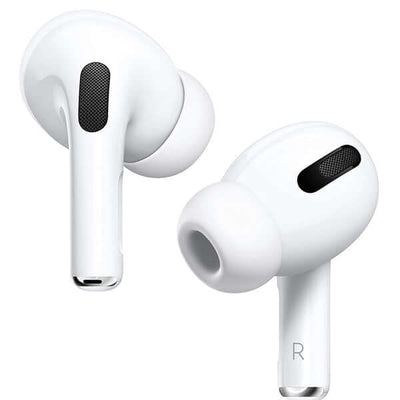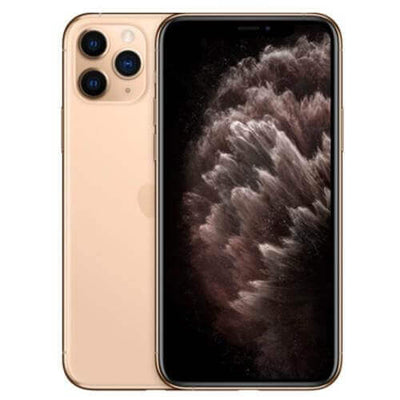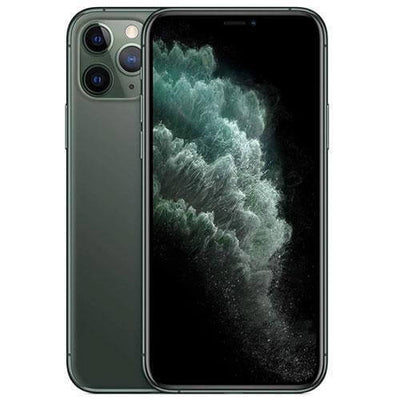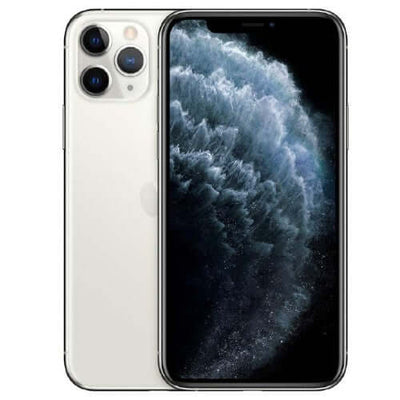Introduction
Every time people talk about folding phones, you can be sure the next question asked is: "Will Apple come up with a folding iPhone?" While several hintsthat Apple is thinking over how to fold smartphones have emerged, the most important question is whether consumers truly want such a thing present on an iPhone or is it just another passing fad We will explore in this exchange what we currently know about Apple's potential foldable iPhone and what the experts say about its possible timing and design.
In a groundbreaking move, tech giant Apple has recently been granted a patent for crease-free foldable displays that could potentially revolutionize the future of smartphones and tablets. The patent showcases Apple's commitment to innovation and pushing the boundaries of design, offering glimpses into a future where flexible devices seamlessly blend functionality and aesthetics.
The history of foldable displays in smartphones and tablets
The concept of foldable displays isn't a novelty at all, and in fact it's been around for quite a number of years now. Huawei and Samsung have from time to time released foldable prototypes to the market in this spirit of trying out new things.Other companies began to pour in their own homey touches with Samsung's latest folding phone and Huawei Mate X. However, these initial efforts had flaws. Perhaps the most serious one was that on each side at least a fold would develop in the display where crease could appear.
Apple's patent for a foldable screen without creases is a big step forward in the field. This builds on existing technology, aiming to eliminate the barriers that have held back more widespread adoption of folding devices. By dealing head-on with the question of creases in the display, Apple's patent opens up new possibilities for what mobile devices will look like in future time to come.
Apple's patent for crease-free foldable displays
Apple's recently patented idea is to create a new design which should banish the folding phone crease blues!The solution to the problem is considerable, however, as Apple will use advanced materials and cutting edge technology to bring those crease-free intuitions more into reality for their users.
One key point in Apple's patent is to wrap the flexible display layer and a protective layer together. The combination allows the screen to fold and unfold without creases. Another use described in the patent is self-repairing materials: these can fix up any light damage that may occur to a cell phone during folding.'
Their focus could be on the iPhone's appearance, yet it is also in its patent. This suggests that the company supports producing visually attractive devices in the era of folding. That should mean not only a neat and streamlined design from the front, but also from back when the handset unfolds.
Advantages of foldable displays for iPhone and iPad
Foldable displays being added to iPhone and iPad brings several advantages that could make life better for ordinary users. The largest benefit involves increasing the screen real estate. Foldable displays make it possible to enjoy a larger display area without giving up on portability. When users watch videos, play games, or do multitasking on their devices they will find the experience more immersive and fluid.
Another advantage of foldable displays is how they can evolve. With a foldable device, a user has the choice between switching to a smartphone or somewhat more tablet flavor depending on their requirements. This kind of flexibility makes for increased productivity and convenience, as it is possible to move seemlessly from one mode/task to another.
The advent of foldable displays can also dramatically impact how we consumer content. This allows users to fold and unfold the display, and immerse themselves more deeply in scenes while watching a movie as well as enjoying an absolute epic tale of adventure set in ancient times. With the greater amount of screen real estate, viewers are offered a more compelling and immersive experience than ever before. More importantly, it has brought new life into our content.
Potential applications and use cases for foldable displays
The advent of a wrinkle-free folding display could be the key that opens a wide world for applications and uses.Wrapping cells reduces the size of devices like digital cameras and music players.Besides having bigger screens and greater productivity-- what more could people ask for? Foldable displays could have uses in any number of industries.
Foldable displays could change the way students study and receive digital content--such as in the education industry.An iPad that folds could easily change its shape to become a textbook or notebook allowing students to write down notes and make comments on what's read there, interact with educational media in a more intuitive manner than ever before.
The advent of a wrinkle-free folding display could be the key that opens a wide world for applications and uses.Wrapping cells reduces the size of devices like digital cameras and music players.Besides having bigger screens and greater productivity-- what more could people ask for? Foldable displays could have uses in any number of industries.
Foldable displays could change the way students study and receive digital content--such as in the education industry.An iPad that folds could easily change its shape to become a textbook or notebook allowing students to write down notes and make comments on what's read there, interact with educational media in a more intuitive manner than ever before.
Challenges and limitations of foldable displays
While the concept of foldable displays is full of promise there are still some downsides and constraints which they need to remedy before becoming mainstream. One of these features is the screen's durability. Foldable displays require firm structures to permit thousands of folds and unfolds without any wear. The display layers material should be able to bear the load of endless folding and unfolding.
Another issue is the thickness of the devices. Foldable displays generally require the addition of new layers and component which can make them thicker bulkier compared to traditional smartphones and tablets. Balancing portability and function is important to make sure that consumers do not have to give up convenience for a larger screen.
Additionally, there are concerns about the cost of foldable devices. The advanced technologies and materials required for crease-free displays can significantly increase the manufacturing costs. This could result in higher price points for consumers, making foldable devices less accessible to a wider audience.
Competitors and their efforts in foldable display technology
But Apple is far from being the only competitor on the block. Within the tech industry, Samsung, Huawei and Motorola have all released their very own folding machines or prototype models. Meanwhile, individual companies each incorporate their unique perspective in foldable display technology, with variable degrees of success.
For example, Samsung introduced the Galaxy Fold, which can be considered one of the first commercially available smartphones with foldable screens. Although the initial launch encountered some problems, Samsung has continued to improve on its products with regards to design and function. The company's latest model--the Galaxy Z Fold 3--boasts a more sturdy monitor and refined appearance.
The Mate X2, Huawei's latest effort, debuted an inward-foldable display. The model features a unique design and plenty of screen real estate, but is limited to certain markets as a result of the company's current troubles with international trade controls.
Motorola has gone a different route with its folding devices. The company released the Razr, a foldable smartphone evocative of the iconic Razr flip phones from the early 2000s. When folded, the Razr offers a design small enough to be carried around with ease after all but the most slightly built of users.
Implications for the future of mobile devices
The introduction of foldable displays without creases has had important implications for the future of mobile devices. This has dramatically changed our perceptions and interactions with technology. Having foldable devices could remake the boundaries of design and function, offering users completely new experiences.
Moreover, foldable displays could unlock new form factors and designs.Unlocking the display at the touch of a finger, Manufacturers can achieve new designs beyond what a traditional smartphone or tablet would yield. This is an opportunity for wearable devices, flexible screens and even foldable notebooks.
The future of mobile devices is not confined to smartphones and tablets. When foldable display technology continues to develop we may even find it integrated with other appliances such as smart watches, and then over the long term come out of our heads as well. The only limitation is our imagination: possibilities abound!
Speculations on the release of Apple's foldable display devices
Like any patent, one must not assume that a patent guarantees the product's emergence. Apple's patent for crease-free foldable screens is a big step forward; no blueprint is however seen therein as to if or when Apple will produce a folding device itself
But given Apple's history of innovation coupled with its commitment to state-of-the-art kit, we can reasonably infer that foldable display technology is already under active consideration there. Apple is a company that prides itself on attention to detail and a focus in aesthetics. When they do make their inevitable move into the foldable market, it will likely have major implications whatever you may want from a platform.
Google's Pixel Fold and Samsung's Galaxy Z Fold
Google has dominated the news this week with its new Pixel Fold, a device that can be called both a phone and a mini tablet. The design concept is similar to Samsung's Galaxy Z Fold 4: it opens out to form a larger surface as wide as a stuffed dumpling. But both of these devices come with a hefty price tag attached: they sell for about Dhs.6,611.20 each. By contrast, Motorola's Razor is a foldable device with the kind of flip design that's both classic and reasonable in price--indeed this year it will sell for a much more affordable $600. For the time being it is only Apple that has yet to release a foldable cell phone among major US manufacturers.
Apple's Approach to Innovation
Apple, on the other hand, takes an altogether more conservative approach whenever it enters new territory. Its products are likely to be accessories to life, offering ways of looking at life through fresh eyes. Therefore, for Apple to publish a folded iPhone, it needs to make it far more than a mere stunt. It needs to offer some kind of real benefit that makes sense for the user, such as super long battery life, a creative artsy head that won't quit even at close to bedtime and convenient lightweight design.
What We Know So Far
While there is no official announcement from Apple regarding a folding iPhone, various sources including analysts, insiders, and reporters have hinted at Apple's interest in foldable prototypes. Rumors began circulating in 2016 when LG was reported to be supplying Apple with foldable displays. In January 2021, Mark German from Bloomberg claimed that Apple had started working on an iPhone with a foldable screen. A month later, John Prosser from Front Page Tech suggested that Apple could be developing a clamshell-style folding iPhone, similar to the Motorola Razor but with vibrant colors. Analyst Ming Chi Kuo added to the speculation, stating that the foldable iPhone could be something between an iPhone and an iPad, but not a clamshell design. He initially predicted a release date of this year but later revised it to 2025.
Patents and Clues
Even though patents do not guarantee commercial products they can give you an insight into the company's future direction. earlier this year Apple was awarded a patent for foldable phone designs resembling the shell of clams, patented as early as 2019. Future technology described in that patent will let users control the phone by touching its side walls or other surface when it's closed. All of this suggests that Apple is looking at making folding phones a real enterprise and coming up with novel ideas of how to interact with them while they're folded up.
Potential Challenges for Apple
Developing a successful folding iPhone requires meticulous attention to detail. Apple cannot afford a disastrous launch like Samsung experienced in 2019 with the Galaxy Fold. The hardware team must ensure that all moving parts function flawlessly, while the software team must create a user-friendly interface that seamlessly transitions between folded and unfolded modes. Additionally, Apple needs to offer compelling reasons for consumers to choose a folding iPhone over traditional models. Perhaps a larger screen design could be the next evolution of the iPad Mini, providing users with the benefits of a larger screen without the need to carry around a full-sized iPad.
Conclusion: The impact of foldable displays on the tech industry and consumer experience
The granting of crease-free folding display patents, the technology industry has taken an exciting step forward. By driving forward, Apple is throwing wide the possibilities for smartphone and tablet designs.
Foldable displays provide you with more spacious screen real estate that is no heavier to carry around. That makes it entirely possible to be both productive, entertained and creative. Applications and usage scenarios are opened up by the technology, everywhere from didactics to games.
While there are still obstacles and limitations to clear, the arrival of a crease-free foldable display represents a big step forward. As firms such as Apple continue to develop and improve the technology, we can expect to see foldable devices become increasingly widespread in coming years.
It is an exciting time to be a tech enthusiast because the future of mobile devices is unfolding before our eyes. With crease-free foldable displays, we are on the cusp of a new era of innovation where function and form blend together seamlessly. These are the kinds of devices that captivate and inspire.
But whether a folding iPhone will emerge is still uncertain today, Apple 's interest in foldable technology is there for all to see.The market for folding phones is coming, and Apple must surely be keeping tabs on advances in this field. Whether Apple will give in to the pressure and launch a folding iPhone remains an open question about which there are opposing views. In the end, it will depend on consumers’ needs and Apple’s view of the extent to which a folding iPhone could have the advantages that other phones do not have.
FAQ
1.Will Apple launch a folding iPhone?
Apple has not officially confirmed that it is developing a folding iPhone. However, While some sources have said all along, Apple is looking into moving gradually towards such a device and it has already made many experimental models of them.
2.How might a folding iPhone take any part in the way we live now?
A folding iPhone may be designed like a tiny tablet and offer a larger screen, giving users more display space. It may arise with benefits like a longer battery period and stronger creativity power.
3.When will we see a folding iPhone?
Rounding Up: There is already speculation that a folding iPhone might be sold as early as 2025, but at time of writing there had been no official confirmation from Apple.
4.What challenges does Apple face in developing a folding iPhone?
Apple must make sure all moving parts work flawlessly and offer a user-friendly interface which can seamlessly transition between being folded and unfolded. Aside, Apple needs some reason to verify folding iPhones over traditional models for consumers to buy them.
5.Why has Apple been cautious in entering the foldable phone market?
Apple is very careful about new technologies, and focuses on achieving quality and innovation. Just like releasing a foldable smartphone, Apple is reluctant until it is certain that folding user value the convenience, not just to following fads comprehensive view is still needed before how can it use in daily life real benefits and so on.
6.How do patents provide insights into Apple's plans?
Although patents do not mean a product will go to market, they hint at the direction a company is looking to take. What companies patent will inevitably reveal how a iPhone or Note-based device looks when compared with what we make today--from both functionality and form factor (from thinness).
7.What innovations can we infer from Apple's recent job promotions and departures?
Many of the employees who are joining other firms may have begun as contractors at Apple, and after a period time they have gained insights into industry or technology trends while at the company. Often it is these employees who leave for greener pastures that offer Apple valuable information.
The aim of a folding iPhone that may appear
If Apple were to release a folding iPhone, then we should expect that this will be more than just a joke. It will need to provide real benefits, such as improved functionality, ease of use for the customer and a design that makes it fit neatly into life style.
8.How does Apple distinguish itself from other phone makers?
By emphasising quality and innovation, Apple sets off its products as solutions for specific problems. A folding iPhone can't be left out of these unique features and selling points if it is to fend off competition.
9.Could a folding iPhone be the new fashion item or point to future smart phones?
The folding phone looks like a stable market trend, but it still seems uncertain whether it will be part in the future of smartphones and begin more important than now or not. Whether a folding iPhone succeeds in the marketplace will depend greatly upon consumer demand and how far it represents substantial improvements over traditional models




















